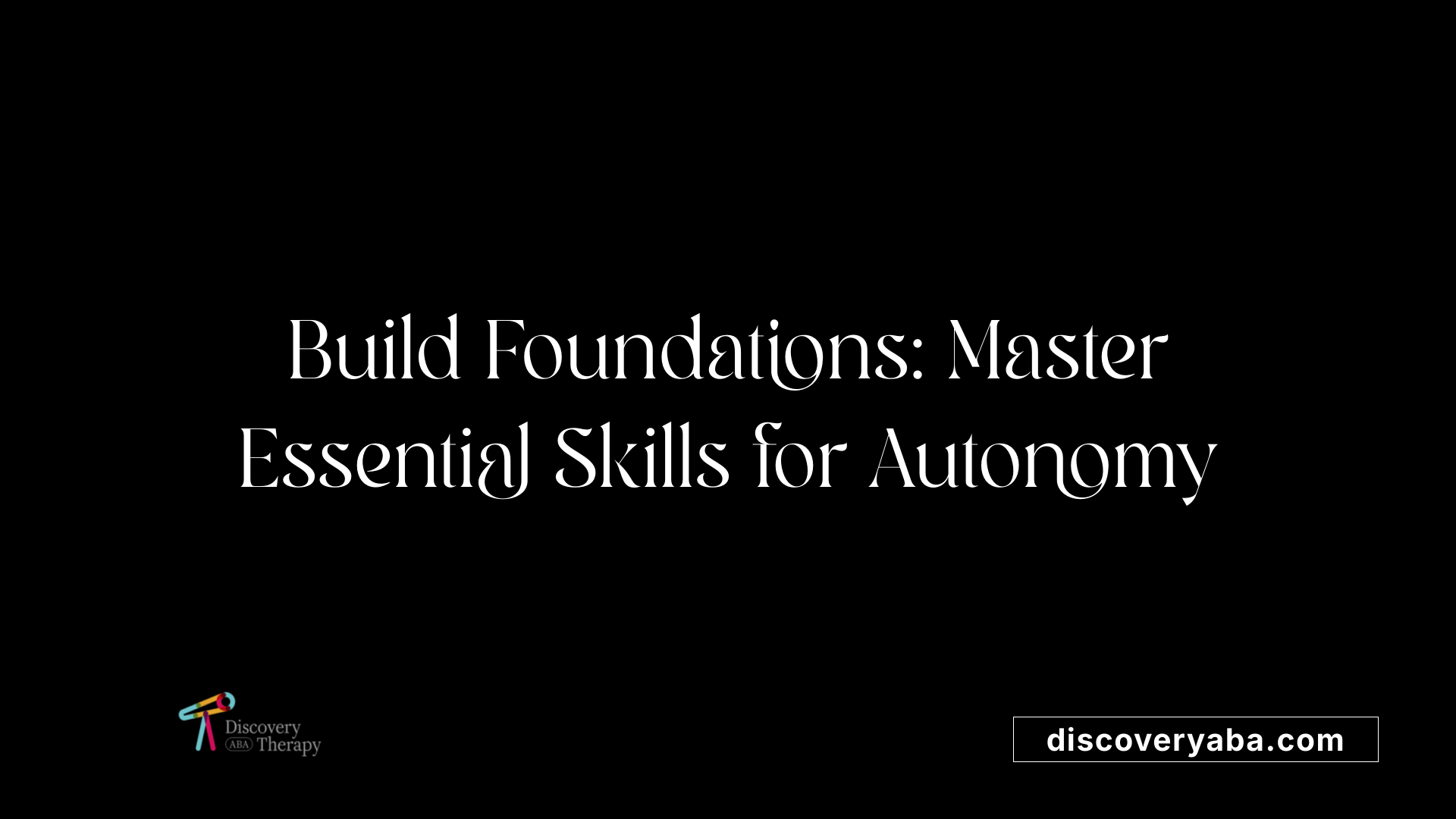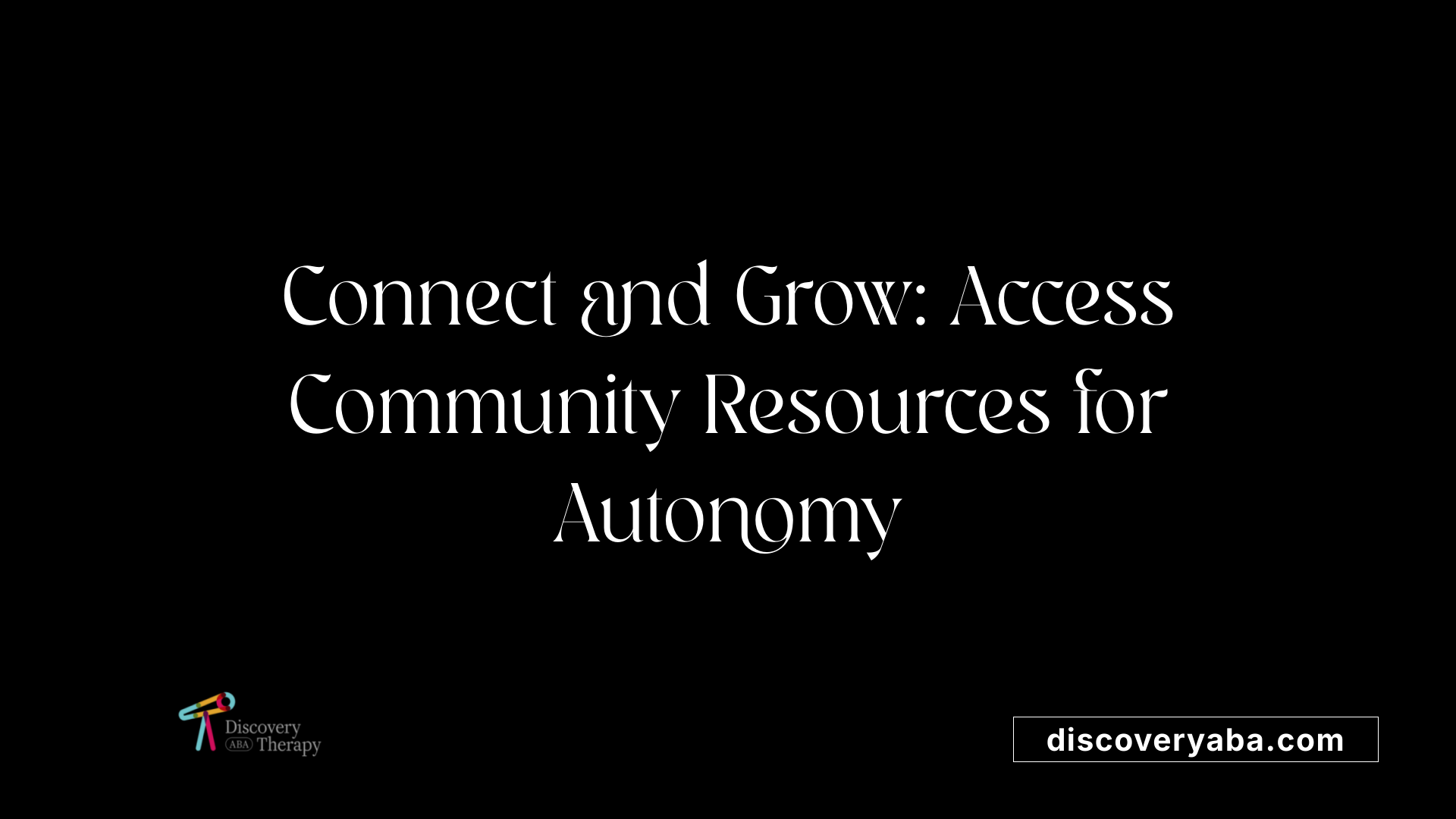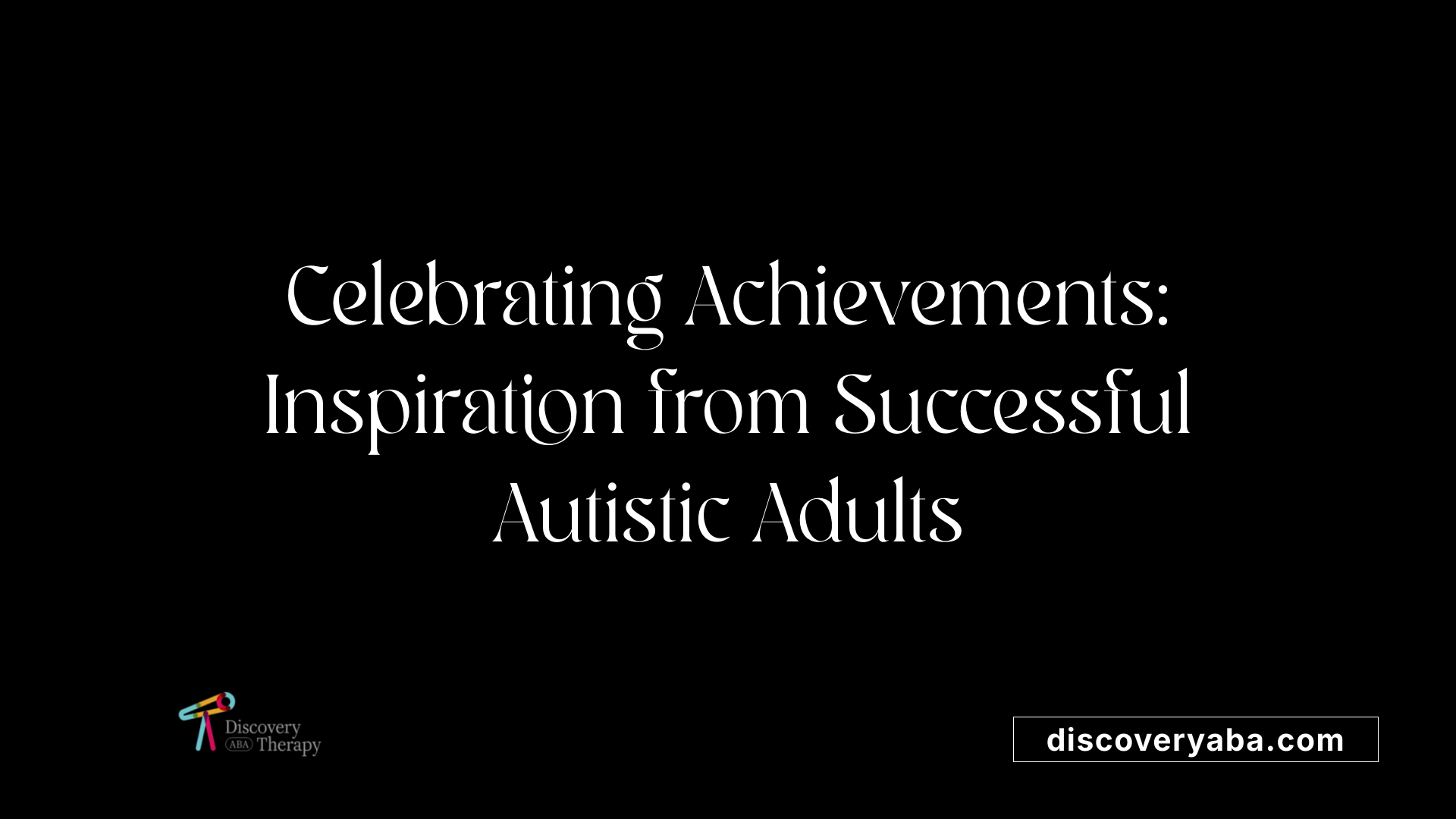Building independence in older autistic individuals
Empowering Autistic Adults for Greater Self-Reliance

A Lifelong Journey Toward Independence
Building independence in older autistic individuals is a multifaceted process that involves tailored strategies, community support, and a deep understanding of each person's unique strengths and challenges. This article explores effective approaches, practical skills development, and innovative tools designed to promote self-sufficiency and improve quality of life for autistic adults. As society advances in embracing neurodiversity, supporting independence remains a vital goal that benefits individuals and communities alike.
Effective Strategies for Teaching Independence
What are effective approaches to teaching independence to autistic children and adults?
Teaching independence to autistic individuals involves embracing a variety of personalized strategies that cater to each person's unique strengths and challenges. A foundational element is the development of essential life skills such as self-care, household chores, managing personal finances, and ensuring safety in community settings.
Visual supports play a pivotal role in these strategies. Tools like checklists, visual schedules, and task analysis break down complex activities into manageable steps, helping individuals understand routines and expectations. Natural environment teaching, which involves practicing skills in real-life settings like grocery stores or homes, enhances the transfer of learned skills into daily life.
Communication development is equally important. The use of Augmentative and Alternative Communication (AAC) devices, along with social stories and role-playing, boosts self-advocacy and social interaction skills. These methods enable individuals to express needs, ask for help, and navigate social situations with confidence.
Positive reinforcement is a powerful approach, encouraging desirable behaviors by rewarding progress and effort. Sensory accommodations, such as noise-canceling headphones or sensory breaks, support emotional regulation and prevent overwhelm, thus promoting sustained engagement.
In implementation, support providers often combine these strategies in structured programs tailored to the individual’s cognitive and sensory profile. This holistic approach fosters independence at home, in community settings, and in employment, enhancing overall quality of life.
Promoting Practical Skills Through Structured Support
What strategies can help promote independence in autistic individuals?
Fostering independence among autistic adults involves a comprehensive approach focused on building essential life skills. Practical skills such as self-care, household chores, money handling, and community safety are foundational for living independently.
One of the most effective tools is the use of visual supports and routines. Visual checklists, schedules, and step-by-step task breakdowns help individuals understand and complete daily activities with less anxiety and greater confidence. For instance, visual checklists for personal hygiene or cooking can guide them through each step, reinforcing routines.
Tailored approaches are crucial. These should consider each person's cognitive abilities, sensory sensitivities, and learning styles. For example, some might benefit from matching systems or picture-based lists, while others might prefer written instructions.
Teaching strategies also include reinforcing communication skills through AAC devices, PECS, or sign language, enabling individuals to express needs, ask for help, or make choices autonomously. This enhances their ability to function independently in various environments.
In addition to skill-building, creating a supportive environment is essential. Environmental modifications, sensory accommodations, and environmental cues reduce sensory overload and help maintain focus on tasks. Transition planning and vocational training prepare individuals for employment, while community safety education ensures their ability to navigate public spaces safely.
Ongoing assessment and personalized goals, often integrated into individual education plans (IEPs), guide these interventions. Support networks—family, caregivers, therapists, and community services—provide ongoing encouragement and reinforcement.
Ultimately, promoting independence is a dynamic process that combines skill development, environmental support, and personalized planning. This holistic approach helps autistic adults lead more autonomous, fulfilling lives.
Essential Life Skills for Autonomous Living
 Managing finances, budgeting, and banking are fundamental skills that significantly contribute to the independence of autistic adults.
Managing finances, budgeting, and banking are fundamental skills that significantly contribute to the independence of autistic adults.
Financial literacy includes understanding how to handle money, make transactions, and plan for future expenses. Techniques such as using visual aids, budgeting apps, and step-by-step guides help individuals grasp concepts like saving, spending, and avoiding debt.
Practical activities, like taking part in shopping trips with support, practicing bill payment, and managing personal expenses, reinforce these skills across real-world contexts.
In addition to financial management, developing skills in transportation—whether using public transit, navigating routes, or considerations around driving—enables autonomous community participation.
Creating routines and supports for daily tasks such as cleaning, cooking, and self-care build a strong foundation of independence.
Building communication abilities, including the use of AAC devices and visual supports, helps express needs, ask for assistance, and engage socially.
Vocational training tailored to individual strengths enhances employment prospects, reinforcing the connection between daily skills and community engagement.
Support from families, professionals, and community organizations ensures ongoing development and confidence building.
Overall, combining these practical skills with emotional resilience training and opportunities for decision-making prepares autistic adults for the complexities of independent living.
| Skill Area | Strategies | Additional Notes |
|---|---|---|
| Managing finances | Budgeting apps, visual checklists | Focus on saving, spending wisely |
| Navigating transportation | Practice routes, visual schedules | Includes public transit and driving considerations |
| Self-care routines | Visual aids, step-by-step guides | Hygiene, grooming, and health |
| Community skills | Role-playing, support groups | Shopping, safety, social interactions |
| Communication | AAC devices, social stories | Expressing preferences and needs |
| Work and vocational skills | Personalized training, real-world practice | Support employment goals |
Developing these skills early with consistent practice and visual supports opens pathways to greater independence, allowing autistic adults to lead self-determined, fulfilling lives.
The Role of Visual Aids and Organizational Tools

How can visual schedules and organizational tools assist autistic individuals in becoming more independent?
Visual schedules, to-do lists, and step-by-step guides serve as practical supports that help autistic individuals understand their routines and tasks clearly. By visually illustrating what needs to be done, these tools reduce uncertainty and anxiety, making transitions between activities smoother and less stressful.
These organizational aids promote independence by breaking down complex activities into manageable steps. For example, a visual schedule for morning routines might include pictures of brushing teeth, dressing, and packing a bag, each step clearly depicted and timed. This allows individuals to complete daily living skills without constant prompts.
In addition to routine management, these tools support critical skills such as self-care, cleaning, and safe community participation. They provide consistent guidance that encourages users to develop good habits and problem-solving capabilities. Incorporating communication devices—like augmentative and alternative communication (AAC) tools or sign language—can further empower individuals to express their choices, ask for help, or indicate preferences.
Supporting decision-making through visual supports enhances autonomy. For example, choice boards allow children or adults to select activities or foods independently, fostering self-determination.
Sensory regulation and emotional support are also integral aspects of fostering independence. When individuals learn to recognize sensory overload or emotional stress through visual cues, they can implement calming strategies themselves.
Overall, these structured supports and visual tools build confidence, encourage skill acquisition, and help autistic individuals navigate their environments more independently. They are especially effective when tailored to individual needs and integrated into daily routines and transitions across home, school, and community settings.
Common Challenges in Achieving Independence
What are some common challenges faced by autistic individuals in achieving independence?
Autistic individuals often encounter several hurdles on their journey to independence. One major challenge is understanding social cues, which can affect their ability to form and maintain relationships both socially and professionally.
Executive functioning difficulties such as planning, organizing, and managing time can significantly hinder daily activity management. Tasks like preparing meals, managing finances, or maintaining personal hygiene may seem overwhelming without appropriate support.
Sensory sensitivities and mental health issues, including anxiety or depression, can further complicate independence efforts by causing discomfort or emotional distress during routine activities or social interactions.
To address these challenges, interventions such as Applied Behavior Analysis (ABA) can be highly effective. ABA helps teach vital skills like communication, emotional regulation, and self-management, fostering greater self-reliance.
Support networks including family, community programs, and assistance with housing or employment are crucial. Tools like visual schedules, social skills training, and community resources help individuals navigate daily life more successfully.
Achieving independence requires a tailored, multi-faceted approach that considers each person's unique strengths and challenges. Combining therapy, environmental modifications, and strong support systems enables autistic adults to build the skills necessary for a more autonomous life.
Supporting Emotional and Mental Well-being for Independence

How can mental health practices support independence in autistic adults?
Mental health plays a vital role in enabling autistic adults to live independently. Despite its importance, self-care for mental well-being is often overlooked. Incorporating relaxation techniques such as breathing exercises, stretching, and listening to calming sounds into daily routines can significantly reduce stress and anxiety.
Sensory tools like noise-canceling headphones or weighted blankets help manage sensory sensitivities, creating a more calming environment. Engaging in positive social activities further enhances emotional resilience, building confidence and social skills.
Introducing these practices early in life helps develop robust coping strategies that can be carried into adulthood. Regular routines that include mental health check-ins support long-term well-being, allowing individuals to better manage challenges associated with independence.
Creating a supportive environment involves open communication about mental health, encouragement of self-care routines, and access to resources. This proactive approach helps autistic adults develop essential tools for autonomy, improving their quality of life and ability to navigate daily responsibilities confidently.
Community Resources and Support Systems

What support systems are available to aid autistic adults in building independence?
Autistic adults benefit greatly from a variety of support networks designed to promote independence and community participation. Organizations like the Fiddle Foundation offer essential resources, advocacy, and community connections tailored specifically for autistic adults. These groups work to increase awareness, provide education, and connect individuals with necessary services.
Government programs also play a vital role. The Division of Developmental Disabilities (DDD) provides comprehensive services including employment assistance, residential support, and daily living help. These services help individuals live more independently and engage actively in their communities.
Financial supports such as Supplemental Security Income (SSI) and Social Security Disability Insurance (SSDI) are critical for many autistic adults. These benefits help cover living expenses, healthcare, and support services, enabling greater self-sufficiency.
Legal frameworks are equally important. Considerations like guardianship and supported decision-making arrangements protect individual rights while allowing autonomy. Guardianship can assign a caregiver to make decisions when necessary, but supported decision-making allows individuals to retain greater control over their choices with assistance.
Combining these resources allows autistic adults to develop necessary skills, access necessary supports, and participate fully in society.
Below is a summary of important resources and their functions:
| Resource/Service | Purpose | Additional Details |
|---|---|---|
| Fiddle Foundation | Advocacy, community support | Offers resources tailored for autistic adults |
| Division of Developmental Disabilities | Employment, housing, daily support | State-funded, personalized support plans |
| SSI and SSDI | Financial assistance | Helps cover basic needs and foster independence |
| Legal supports (guardianship, supported decision-making) | Rights protection | Ensures autonomy while providing necessary safeguards |
Understanding and utilizing these systems can significantly enhance the independence and quality of life for autistic adults, ensuring they have the support needed to thrive within their communities.
Success Stories and Evolving Perspectives on Autism and Independence

How do success stories influence perceptions of independence in autistic adults?
Stories of prominent individuals with autism, like Temple Grandin and Daryl Hannah, serve as powerful proof of the possibilities for autonomous living and achievement. These narratives demonstrate that with the right support, acceptance, and recognition of individual strengths, autistic adults can thrive in diverse areas such as careers, advocacy, and community participation.
Such successes challenge outdated stereotypes that often underestimate the capabilities of autistic individuals. They help shift societal views toward understanding neurodiversity—that diverse ways of thinking and functioning are valuable.
These stories foster hope and motivation for families and professionals working to develop tailored interventions, self-advocacy skills, and community support systems. They advocate for environments that celebrate differences and promote independence, reinforcing the importance of individualized approaches.
Moreover, visibility of successful autistic adults encourages increased societal acceptance and inclusion. It emphasizes that independence can look different for each person, underscoring a future where diversity in ability and expression is embraced as part of a rich, inclusive society.
Fostering a Society of Support and Inclusion
Building independence in older autistic individuals is a continuous, personalized journey that encompasses developing essential life skills, utilizing visual and technological supports, and ensuring access to community resources. It requires commitment from caregivers, service providers, and society at large to create environments that respect individuality and promote self-sufficiency. As awareness and understanding grow, so too does the opportunity for autistic adults to live independent, meaningful lives with dignity, respect, and full societal participation.
References
- Strategies for Autistic Adults to Achieve Greater Independence and ...
- Increasing Independence in Adults with Autism Spectrum Disorders
- Ten Ways to Build Independence | Autism Speaks
- Increasing Independence of Adults With Autism in Community ...
- Life skills for autism | Autism Speaks
- The Basics of Teaching Independence on Autistic Individuals
- Developing life skills as an autistic adult - Autism Awareness Australia
- Experiencing Independence: Perspectives from Autistic Adults
- PFA Tips: 10 Ways to Build Independence - Pathfinders for Autism
- Daily Living Skills: A Key to Independence for People with Autism
Find More Articles
Contact us
North Carolina, Tennessee, Nevada, New Jersey, Utah, Virginia
New Hampshire, Maine
Massachusetts, Indiana, Arizona, Georgia
.avif)























































%2520(1).jpeg)































.jpeg)





